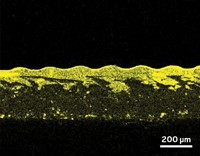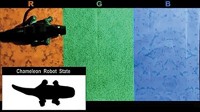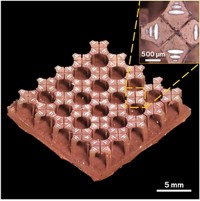Advertisement
Grab your lab coat. Let's get started
Welcome!
Welcome!
Create an account below to get 6 C&EN articles per month, receive newsletters and more - all free.
It seems this is your first time logging in online. Please enter the following information to continue.
As an ACS member you automatically get access to this site. All we need is few more details to create your reading experience.
Not you? Sign in with a different account.
Not you? Sign in with a different account.
ERROR 1
ERROR 1
ERROR 2
ERROR 2
ERROR 2
ERROR 2
ERROR 2
Password and Confirm password must match.
If you have an ACS member number, please enter it here so we can link this account to your membership. (optional)
ERROR 2
ACS values your privacy. By submitting your information, you are gaining access to C&EN and subscribing to our weekly newsletter. We use the information you provide to make your reading experience better, and we will never sell your data to third party members.
Materials
Speedy printing of smart surfaces
A roll-to-roll printer stamps nanoscale features onto sheets of materials
by Katherine Bourzac, special to C&EN
April 20, 2016
| A version of this story appeared in
Volume 94, Issue 17

Materials scientists can turn sheets of plastic or metal into antibacterial, self-cleaning, or lubricating coatings by patterning the surfaces with nanostructures.
To make such smart surfaces quickly and on a large scale, Barbara Stadlober of Joanneum Research, a government research center in Austria, and colleagues built upon a nanoimprinting method that uses rotating stamps to continuously and rapidly impress patterns onto moving sheets of material (ACS Nano 2016, DOI: 10.1021/acsnano.5b07411).
The sheets are coated with a polymer that hardens when exposed to ultraviolet light, curing the stamped pattern. To make a patterned metal surface, the researchers can use the sheet as a mold, coating it with metal that they can then pull off as a film. The system can continuously print features ranging from 100 nm to 25 μm wide on a substrate 250 mm wide, and at speeds greater than 10 meters per minute.
Stadlober’s group tailored the recipe of the UV-curable polymer to print different types of complex three-dimensional structures, such as mushroom shapes with undercut features. They made superhydrophobic plastic coatings and transparent electrodes consisting of an invisible grid of metal nanowires.
C. Grant Willson of the University of Texas, Austin, is impressed with the system’s performance and thinks the team could speed up the process by further improving the properties of the curable material.





Join the conversation
Contact the reporter
Submit a Letter to the Editor for publication
Engage with us on Twitter